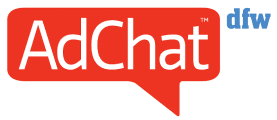For the advertising or marketing agency that has put in the hard work to earn a new contract with a client, these are the tough conversations: What starts as a manageable and profitable scope of work can quickly balloon out of control if not managed properly. Agencies then face the delicate task of setting boundaries with the client without damaging the relationship.
A client’s inclination is, understandably, to try and get more work for less money. However, in a highly competitive landscape where many agencies are quite willing to cover extra work for free, the onus is on the agency to manage those costs while still adding value (to ensure return work). In the current marketing ecosystem, this unbalanced relationship leads to clients feeling comfortable asking for more and agencies faced with decisions to make.
Scope creep is a real issue that can strain the resources and profitability of an agency. So how do you say no to out-of-scope requests while still appearing to be a valuable partner? It starts with changing the focus of the conversation from cost to value and setting mutually understood expectations at the outset.
Create A Plan And Prepare
Most agencies are enthusiastic about their clients. You want to be there for them, be nimble and do whatever it takes for clients to be successful. That said, early in the relationship, you have to be flexible as you learn to anticipate a client’s needs. In fact, sometimes even clients don’t always know everything they will need. You have to find a balance between planning ahead and being responsive to unexpected requests.
One way to prepare is to set a fixed price for additional projects ahead of time. This is especially helpful in situations where clients have last-minute changes or quick-turn, opportunistic projects and there is not enough time for a back-and-forth price negotiation. Setting fixed prices ensures that you can be as helpful, nimble and transparent as possible without disrupting your current workload. It also manages the expectations of the client, who knows that if they tack on something else, costs will predictably go up.
Review And Gain Understanding
Once you and a client have worked together for a while, it’s a good idea to look back and review how well you both adhered to the plan. I recommend that this be a relaxed conversation in a less formal setting. You can frame the review in a positive way, such as: “We’ve had a great year. Now, let’s talk about what we did and what was expected because we’re always trying to look back and see what we can do better.”
You and your client can both point out where it felt like there were pain points or friction. Take the time to list all the projects that were scoped out versus what you actually did. But emphasize how much you accomplished.
Good documentation that starts at the beginning of the partnership is important because when it comes time for a review, the records help both of you understand where the cash (and heart) burn is. Issues are not always obvious or clear-cut. But documentation might show you what you could do to be more efficient, improve or optimize. And if a client really likes your agency and wants to use you for everything, they need to look at that documentation and make sure they are not hugging you so hard you can’t breathe. There has to be a little bit of give and take.
Prioritize To Drive More Value
If you’re in an ongoing or retainer relationship with a client, the final step in the review process is to agree on whether there is anything currently scoped that needs rethinking. Are there things that could be taken off the table to make room for new priorities? Should the scope be more focused to put greater resources behind fewer projects, so you can do fewer things better instead of spreading yourself too thin? This is where you can truly show your agency’s worth by homing in on projects with real value that drive the client’s business forward and minimize spending on tasks that feel more like busy work.
To be clear, this is an open dialogue and a chance for you to hear what the client really cares about. Aligning on priorities allows the client to get the most out of your capabilities so you can be a more valuable partner instead of a cost center or expense on a corporate balance sheet.
Navigating A Changing World Is Easier Together
Your agency and the companies you represent have to be prepared to adapt on the fly to changing consumer preferences. But staying adaptable doesn’t mean you and your clients can’t have clear agreements about what to do and how much it will cost. Good planning, regular reviews and prioritization of what has the most value for the brand are all great guardrails that can prevent scope from getting out of control. If you and your clients approach each of these steps in true partnership and have empathy for each other’s perspectives, you can both achieve a comfortable level of profitability and ROI, even as the world around you shifts.
source
Tripp Westbrook, the President and CCO of Firehouse, drives innovation against the norm.










